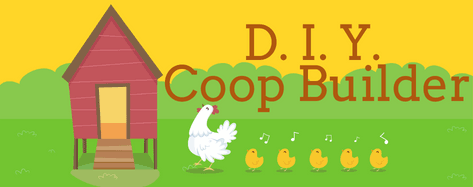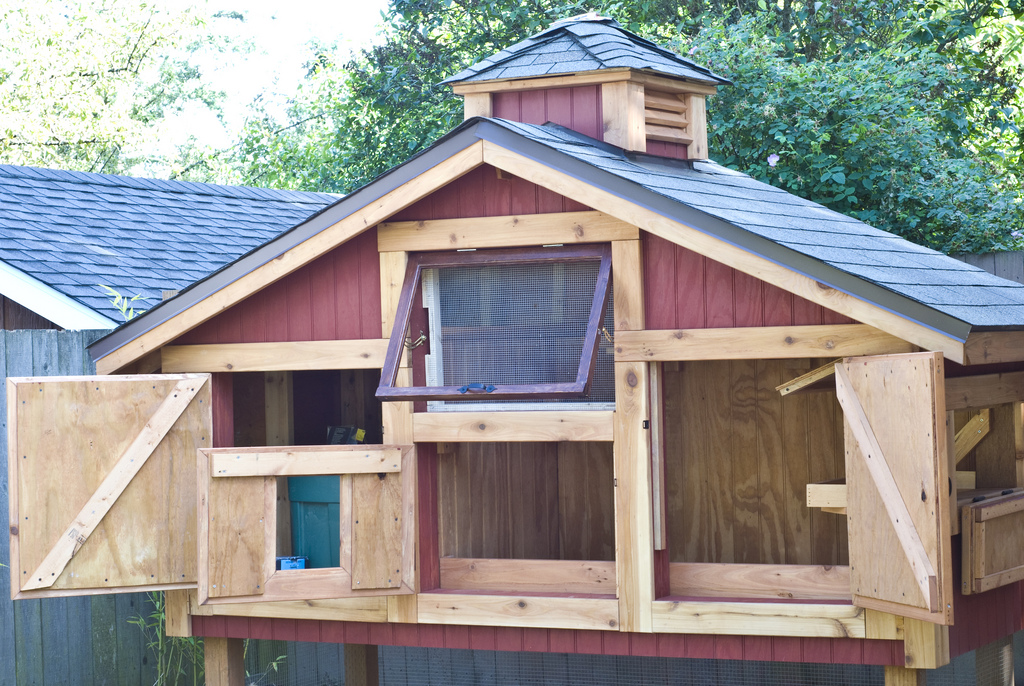The primary purpose of a chicken coop is to keep the chickens safe at night. They are more vulnerable when they are sleeping, and chickens are a favorite animal for predators. Dogs, cats, raccoons, weasels, snakes, and even predatory birds are all potential threats for chickens and their eggs, so most chicken owners rely on a coop to keep them safe and secure and protect their investment. But how secure do they need to be? And exactly what kind of doors should a chicken coop have?
Does a chicken coop need doors?
Most modern chicken coops have not just one door, but two. There is a small door that the chickens use to go in and out of, as they spend the day outside in the run and the nights inside the coop. And there is a larger door that the owner uses to access the coop to harvest eggs, clean, or just check on the chickens. For a small coop, this larger, human door may simply be an extra hatch door on the back. In a large coop, it may be a full-size, traditional door.
Is a small, chicken door necessary?
The small, chicken access door potentially serves two purposes:
Protection
If your chickens simply go back and forth between the coop and the run, and the run is predator-proof and secure, this small chicken door may not be necessary.
Climate control
If your chicken coop is well-insulated, or you live in an area with mild temperatures all year long, is door may not be necessary.
In short, if your chicken coop is well-protected, and you won’t need to provide extra protection from winter cold, you may not need this door.
However, you may find unexpected circumstances that require the door. It may be wiser to have a door that is capable of securely latching, but simply leave it open for extended periods when it is not needed.
Is a larger, human access door necessary?
The larger door that gives people access to the inside of a chicken coop also generally serves two purposes:
Egg collection
When chickens are laying, it’s good to check the nest boxes twice a day and harvest the eggs.
Cleaning
A chicken coop needs to be cleaned regularly.
Also, some people keep feeders and water inside the coop, so they need access to those, and sometimes, if a chicken is behaving oddly or seems to be missing, it may be necessary to simply go inside the coop to check on a chicken.
If your coop is very small, or you have a chicken tractor, the design may have features that serve those needs without a door. For example, some designs have roofs that can be lifted off entirely. Whether you use a door or not, you will need some form of easy access to the inside of the coop.
What kind of doors should a chicken coop have?
There are several kinds of doors that may serve the above purposes.
Hatches
A panel that is hinged on the top or bottom, and latches securely, is a common design in chicken coops. A large hatch panel can open the coop for a person to reach or look inside, or a small hatch can allow chickens freedom to go in and out.
Sliding doors
Many coop owners have designed vertically sliding doors that can be opened or closed with a pulley system. Using a pulley system allows people to open and close the doors securely without needing to go into the run or coop twice a day. It also makes it easier to automate the opening and closing of these doors, like a garage door system.
A single, large door
Some people choose to use a single, human-size door with a ramp, and simply leave it open during the day for the chickens and close it at night.
Lifting roof panels
A roof access panel that is lifted like a car hood is a common design in chicken coops, particularly smaller ones. It gives easy access to look or reach down inside, without creating the need for additional doors. It’s a very space-efficient way to access a chicken coop.
Conclusion
Whatever kind of door you choose, there are a few important things to remember:

- It should close completely and securely. If you are using a human-sized door, it is best to have a latch at both the top and the bottom. Remember that raccoons have clever little fingers and can manipulate hook closures. Remember that snakes and mice can get into gaps larger than ½ inch (and sometimes smaller). Finally, remember that wood can swell or shrink or change over time. Check the door for gaps and make sure it fits securely and check it a few times a year to keep an eye on how well it is protecting your chickens.
- Doors should open outward, not inward. Doors that open outward prevent accidentally hitting your chickens when you open the door. It may also provide extra protection if an aggressive predator pushes on the door.
- Your doors will get a lot of use. You will be in and out of the chicken coop at least twice a day to let chickens out, put them in, harvest eggs, check feeders and water, and clean. Choose durable, weather-proof hardware and hinges.
Chicken coop designs vary dramatically, and each design lends itself to a different set of solutions for entrances and exits. Choose the door design that works best for your coop and your needs.

